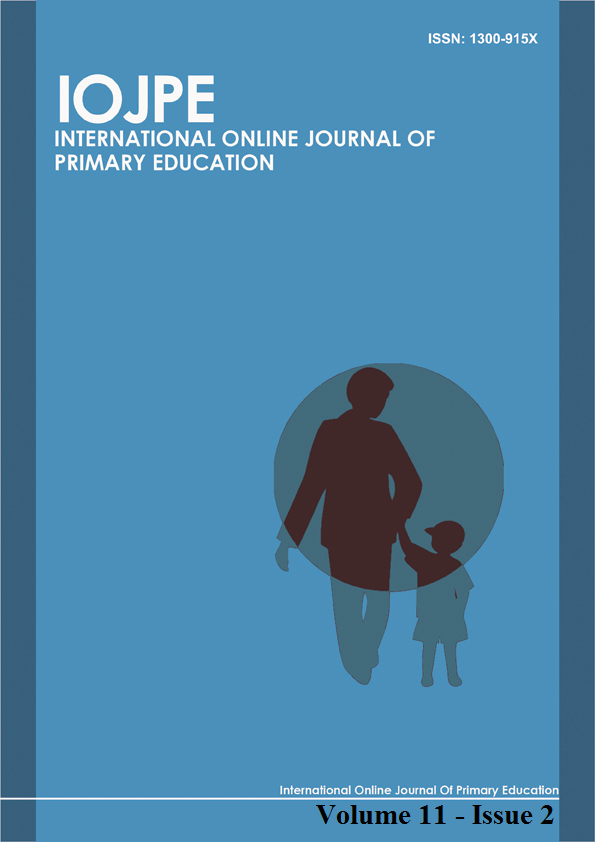GENDER ROLES AMONG PUBLIC ELEMENTARY TEACHERS: BASIS FOR GENDER-RESPONSIVE INTERVENTION ACTIVITIES
Abstract
Teachers are usually considered the backbone of schools, and understanding teachers' roles is vital to understanding the educational system. With this as a focus, differences in the perceived gender roles of public male and female elementary teachers were collected from 262 teachers from public central elementary schools in Cavite, Philippines. Results showed that elementary teaching is still a female-dominated profession and students have only limited encounters with male and/or father figures in elementary education. It was also observed that male and female teachers share equal roles in reproductive, community, and leisure activities. However, discrepancies are observed in their productive activities as female teachers spend more time in productive activities than male teachers. Strategies for gender-responsive policies and projects for teachers and other education personnel are recommended.
Keywords: Elementary teachers, gender roles, reproductive roles, productive roles, community roles.
REFERENCES
Antecol, H., Eren, O., & Ozbeklik, S. (2015). The effect of teacher gender on student achievement in primary school. Journal of Labor Economics, 33(1), 63–89. https://doi.org/10.1086/677391
Dai, A., Li, D., Zhu, H., & Zhang, Z. (2022). How do teachers' gender stereotypes impact students? Advances in Social Science, Education and Humanities Research, 637, 728-733.
Department for International Development, 'Gender manual: A practical guide for development policymakers and practitioners, DFID, London, 2002, available at www.allindiary.org/pool/resources/dfid‐gender‐manual.pdf
Dickey, M. W. (2014). Gender-specific ınstructional strategies and student achievement in 5th grade classrooms (Doctoral dissertation). Retrieved from https://scholarcommons.sc.edu/etd/2624
Florack, A. (2012). The impact of teachers of different genders instructing students of different genders (MS in Literacy Education). Ashley Florack, St. John Fisher University.
Garcia, R. M. (2014). Educator perceptions: The impact of male elementary school teachers (Master's Thesis). Rod Matthew Garcia, California State University, Monterey Bay. https://digitalcommons.csumb.edu/caps_thes/589
Gong, L., & Song. (2018). The effect of teacher gender on students’ academic and noncognitive outcomes. Journal of Labor Economics. 36(3). DOI: https://doi.org/10.1086/696203
Hentschel T., Heilman M.E., & Peus, C. V. (2019) The multiple dimensions of gender stereotypes: A current look at men’s and women’s characterizations of others and themselves. Frontiers in Psychology. 10:11.
Ingersoll, R. M., & Collins, G. J. (2018). The status of teaching as a profession. In J. Ballantine, J. Spade, and J. Stuber (Eds.), Schools and society: A sociological approach to education (p. 199–213) 6th Ed. CA: Pine Forge Press/Sage Publications.
Kabeer, N. (2005). Gender equality and women's empowerment: A critical analysis of the third millennium development goal1. Gender & development, 13(1), 13-24.
Kabira, W. M., & Masinjila, M. (1997). ABC of gender analysis. Nairobi: Forum for African Women Educationalists.
Leach, F. (2003). Practicing gender analysis in education, Oxfam Great Britain, Oxford, UK.
Longwe, S. H. (1998). Education for women's empowerment or schooling for women's subordination?. Gender & development, 6(2), 19-26.
Maligalig, D. S., Caoli-Rodriguez, R. S., Martinez, A., & Cuevas, S. (2010). Education outcomes in the Philippines. Asian Development Bank.
Mannathoko, C. (1999). Theoretical perspectives on gender in education: The case of Eastern and Southern Africa. In Education, Equity and Transformation (pp. 445-460). Springer, Dordrecht.
McGrath, K. F., Bhana, D, Bergen, P. V., & Moosa, S. (November 18, 2019). Do we really need male teachers? Forget those old reasons, here’s new research?. Available at https://www.aare.edu.au/blog/?p=4726
Partick, M. D. (2009). Addressing the lack of male elementary school teachers: Factors that influence grade-level preference (Unpublished Master's Thesis), Liberty University.
Philippine Statistics Authority. (2016). Men and women in the Philippines. Available at https://psa.gov.ph/content/wam-women-and-men-handbook-philippines-2016
Trends Philippine Statistics Authority [Calabarzon Regional Social and Economic] (2019). CALABARZON regional social and economic trends. Available at http://rsso04a.psa.gov.ph/
Sansone, D. (2017). Why does teacher gender matter?. Economics of Education Review, 61, 9-18. https://doi.org/10.1016/j.econedurev.2017.09.004.
United Nations Children’s Fund (UNICEF)/United Nations Educational, Scientific and Cultural Organization (UNESCO), (2007). A human rights-based approach to education for all: A framework for the realization of children's right to education and rights within education. UNICEF and UNESCO, New York and Paris.
United Nations Educational, Scientific and Cultural Organization, 'Promoting gender equality in education: Gender in education network in Asia‐Pacific (GENIA) toolkit,' UNESCO's Asia and Pacific Regional Bureau for Education, Bangkok, 2009, available at http://unesdoc.unesco.org/images/0018/001864/186495E.pdf
Wood, T. D. (2012). Teacher perceptions of gender-based differences among elementary school teachers. International Electronic Journal of Elementary Education. 4(2), 317-345.
World Bank Group (2020). Primary education, teachers (% female) – Philippines. available at https://data.worldbank.org/indicator/SE.PRM.TCHR.FE.ZS?locations=PH
Downloads
Published
Issue
Section
License
Copyright (c) 2022 International Online Journal of Primary Education (IOJPE) ISSN: 1300-915X

This work is licensed under a Creative Commons Attribution 4.0 International License.





